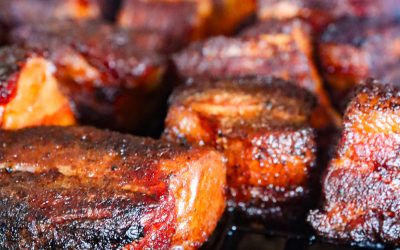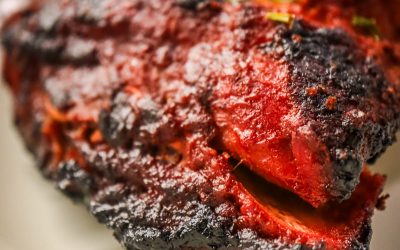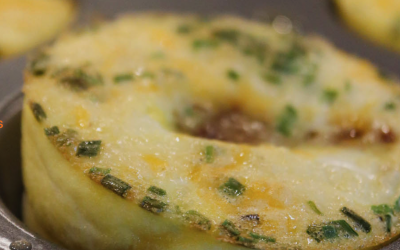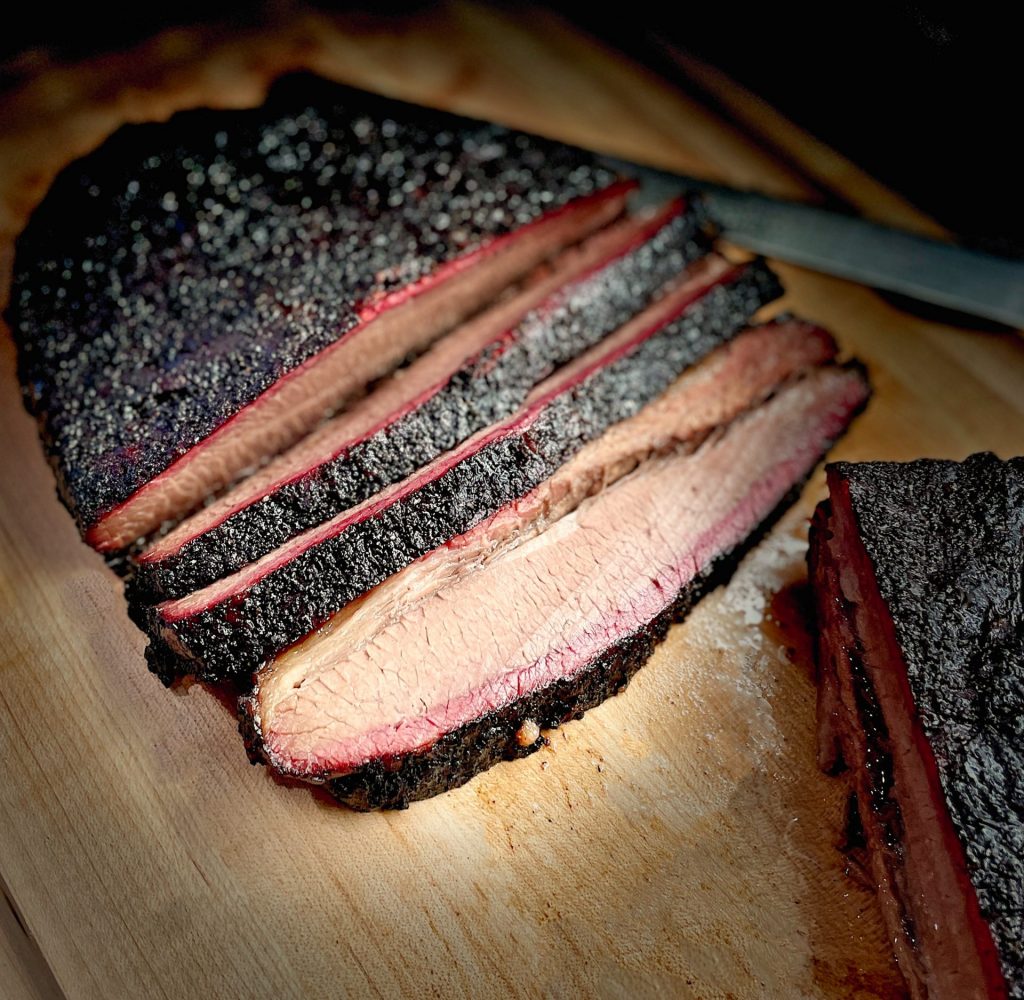
Smoked Brisket: The Ultimate Guide To Slow Cooked Beef
Smoked brisket is the gold standard for barbecue. Which has been named the ‘king of meats‘ for a good reason. With a crispy salty bark, impossibly tender meat, and a truly succulent smoky taste this smoked brisket recipe offers the ultimate BBQ experience!
Why Smoked Brisket?
BBQ meat is smoked low and slow to break down the connective tissue and render out the fat. We do this, because most of what is perceived as moisture in meat, is actually rendered fat.
The goal with brisket is to be able to build up a nice bark (or crust) on the exterior, while still keeping the interior moist. You want to build a beautiful bark, while still being able to pull apart the brisket slices with little effort!
I have always had the best results with a simple salt, pepper, and garlic seasoning. This allows the flavor of the meat to shine through, while still building a perfect bark.
Smoking the brisket low and slow (and utilizing “the stall”) will produce an awesome bark, with plenty of that smoky taste we are all after!
What is the Stall?
Large cuts of meat go through a stall period. This occurs at an internal temperature of anywhere from 140 to 160 degrees. The temperature can stay at this level for an extended period of time.
The scientific term for this phenomenon is called “evaporative cooling”. Which is just a fancy term for sweating.
Much like we sweat to stay cool, meat does the same thing!The meat will continue sweating (keeping the internal temperate from rising), until enough moisture has been released.
The “Texas Crutch”
You can push through the stall by using the “Texas Crutch”. Which is a trick first popularized by a few Texas pit masters in which you tightly wrap the meat with aluminum foil or butcher paper during the stall period.
I usually prefer to let the brisket get through the stall on its own. Building bark throughout. I then wrap as soon as it is through to stall to preserve moisture.
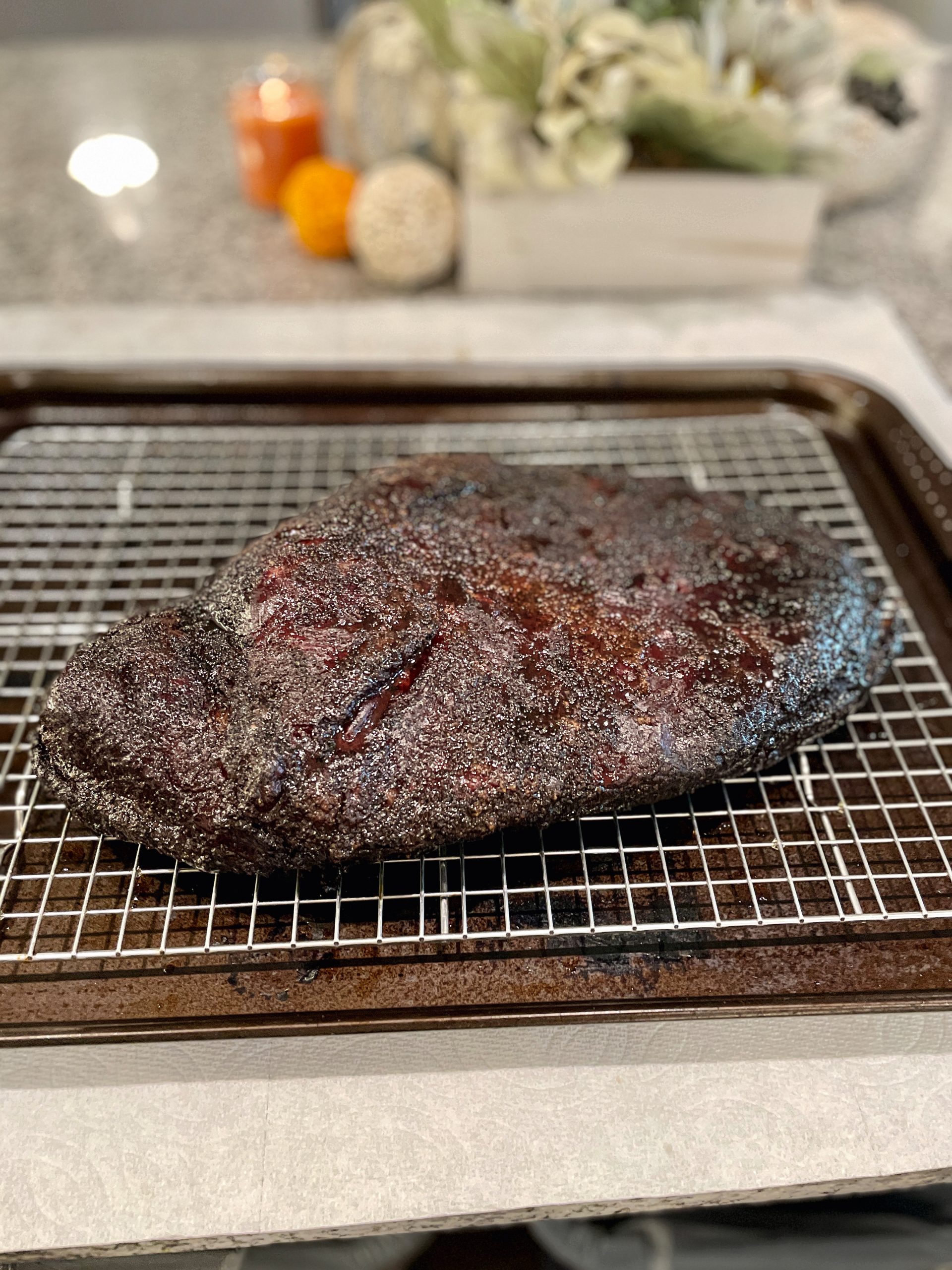
“Bark is what adds such complex, smokey flavors to your BBQ”
What Exactly is Bark?
Bark is the incredibly rich and tasty crust that forms on the surface of smoked meats. It is what adds such a complex, smokey flavor to your barbecue.
The bark is a big reason we enjoy eating smoked barbecue. Without it, we might as well just throw it in the oven, and save the hassle.
Bark is a result of several chemical reactions taking place during the low and slow cooking process. Spices, moisture, time, and fat all contribute to the amount of bark that will form during the smoke.
Use moisture to build bark:
Moisture is an important factor when smoking barbecue, and greatly influences bark formation. This is why we spray (or spitz) the meat with an apple cider vinegar solution.
- Smoke sticks to moist surfaces more so than dry surfaces. Moisture also helps to lower the temperature of the meat. Which in turn slows down the cook time, and helps build more of that tasty bark!
How to Smoke Brisket
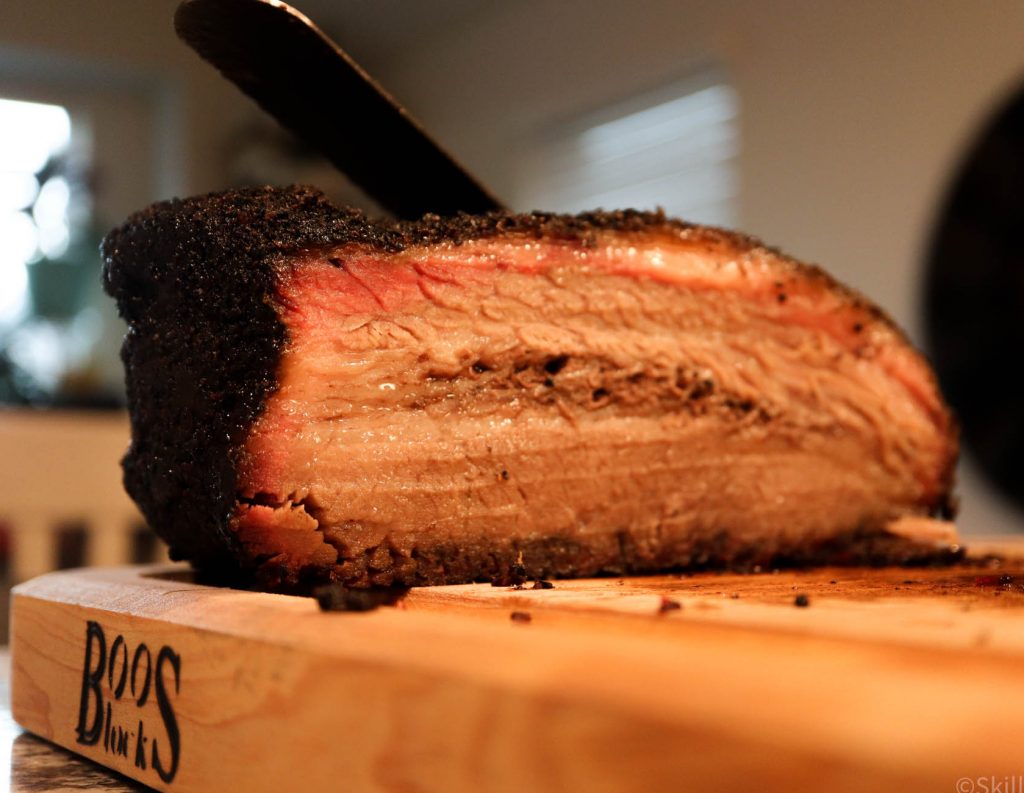
Preparing for the Smoke
For this recipe, I was able to score a decently priced brisket through Wild Fork Foods. They offer a great selection, and can ship to most locations next day!
Dry Brine When Possible
Dry brining is a technique which uses salt and air to dry the surface of meat. The salt and air work in unison to redirect moisture inside the meat. This allows additional moisture to be retained during the smoke.
Unlike a wet brine, dry brining will not add any extra flavor to the meat (except for some saltiness). This is important when making smoked barbecue, where you want to let the taste of the meat to shine through!
- First, generously season the surface of the brisket with kosher salt.
- Then, place uncovered brisket in fridge for 24-48 hours.
- Finally, remove and season brisket with pepper and granulated garlic.
Use Plenty of Pepper
Pepper plays a vital role in building up the perfect bark. Bark forms as the result of chemical reactions between fat-soluble and water-soluble spices.
In this recipe, the pepper and garlic act as fat-soluble spices. Unlike salt, they will not penetrate into the meat during the smoking process.
This allows the spices to remain on the surface of the meat. As smoke is introduced over a long period of time, these spices react with the smoke to produce the highly sought after bark.
Use a Smoke Tube
The following advice only applies to pellet grills. While pellet grills are extremely convenient, you do lose some smoke flavor compared to an offset smoker.
To impart more smoke flavor, try using a smoke tube like this one here.
This will help to introduce more smoke throughout the cook. You can even cold smoke with these smoke tubes. How awesome is that!?
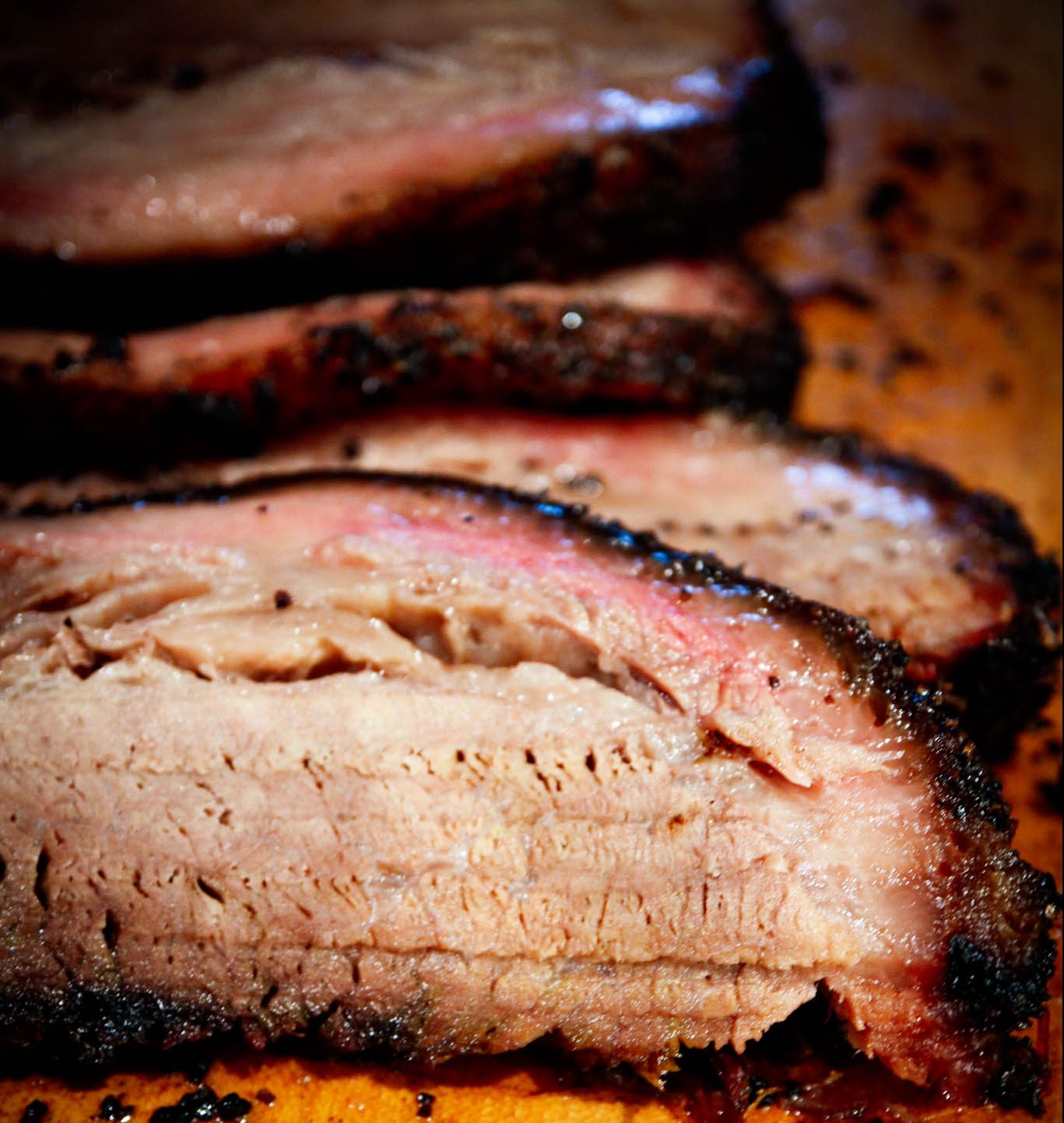
“Pepper plays a vital role in building up the perfect bark”
Smoking the Brisket
- Start by dry brining the brisket with an even coating of kosher salt.
- Then, place the brisket on an uncovered tray in the fridge for 24 to 48 hours.
- Remove the brisket and season liberally with pepper and granulated garlic.
- Next, set smoker to 250 degrees.
- Fill the smoke tube with pellets and ignite until flaming, for 10 minutes. (optional).
- Blow out the flame and transfer the smoke tube to the pellet grill. (optional)
- Place the brisket fat side down with the thickest part (the point) towards the heat source.
- Smoke at 250 degrees.
- After 3 to 4 hours start spritzing with equal parts apple cider vinegar and water.
- Continue spraying every hour until internal temp measures 170 degrees.
- Pull off brisket at 170 and wrap tightly with butcher paper or foil.
- Return the brisket to the smoker and continue to smoke at 250 degrees.
- Finally, remove the brisket when the internal temperature measures 203 degrees.
- Allow the brisket to cool for at least 1 hour before slicing.
What kind of smoker?
There are hundreds of different types of smokers on the market. From pellet grills to offset (stick) smokers. You can even modify some charcoal grills to smoke.
Offset “stick burner” smokers generally produce the best smoked food. But it means maintaining a real fire which can be tough.
On top of cooking and prepping the meat, you will need to learn how to maintain constant temperatures, fire management, and have a proper place to stack all the wood.
Pellet grills:
Pellet grills offer convenience. You can set and forget while the grill does all the work. Sure, you lose a fraction of the smoke taste, but what you gain in convenience more than makes up for it!
The convenience that pellet grills provide lets you focus on the most important thing, the meat! This is why I recommend them for those new to smoked barbecue. I was able to pick up a very affordable Z grills pellet grill, that I absolutely love.
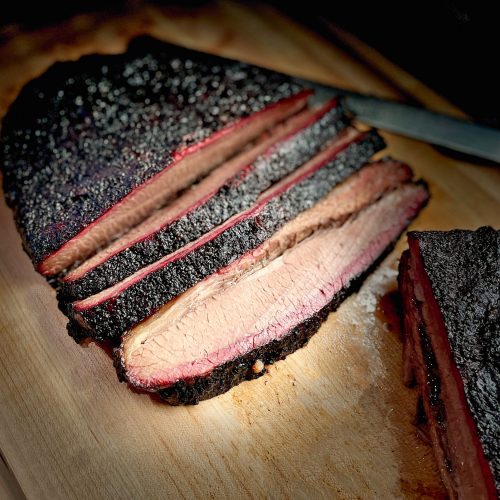
Smoked Brisket
Equipment
- Pellet grill or equivalent smoker
- Smoke tube (optional)
Ingredients
- 1 layer Kosher salt
- 1 layer Black pepper 16 mesh
- 1 layer Garlic granulated
Instructions
- Dry brine the brisket with an even coating of kosher salt
- Place the brisket on uncovered tray in the fridge for 24 to 48 hours
- Remove the brisket and season liberally with pepper and granulated garlic
- Set smoker to 250 degrees
- Fill the smoke tube with pellets and ignite until flaming, for 10 minutes. (optional)
- Blow out flame and transfer the smoke tube to the pellet grill. (optional)
- Place the brisket fat side down with the thickest part (the point) towards the heat source
- Smoke at 250 degrees
- After 3 to 4 hours start spritzing with 50% apple cider vinegar and 50% water solution
- Continue spraying every hour until internal temp measures 170°
- Pull off brisket at 170° and wrap tightly with butcher paper or foil
- Return brisket to the smoker and continue to smoke at 250 degrees
- Remove the brisket when the internal temperature measures 203 degrees (or is probe tender*)
- Allow the brisket to cool for at least 1 hour before slicing
Notes
Latest Recipes
Pork Belly Burnt Ends
Intro: Why Pork Belly Burnt Ends? Pork belly burnt ends are truly nature’s candy as far as barbecue goes. In the realm of barbecue aficionados, few dishes command as much attention and admiration as pork belly burnt ends. Originating from the traditional burnt ends…
The Maillard Reaction
The Maillard Reaction Who doesn’t like a little char on their food? If you find yourself choosing that chicken breast with the perfect grill marks, or the steak with that mahogany crust, you are experiencing the Maillard Reaction first hand! This “Browning Process”…
Keto Egg Bites
Keto Egg Bites Keto Egg Bites Perhaps the most important quality in breakfast for many is convenience. These Keto egg bites are not only convenient, but are super tasty and nutritious to boot! Packed with flavorful protein, low carbs, and plenty of healthy fats that…

